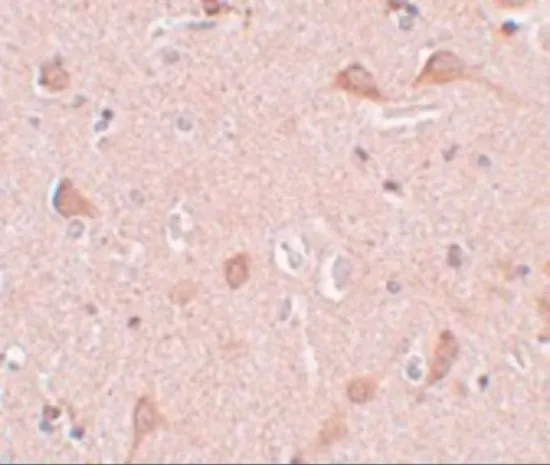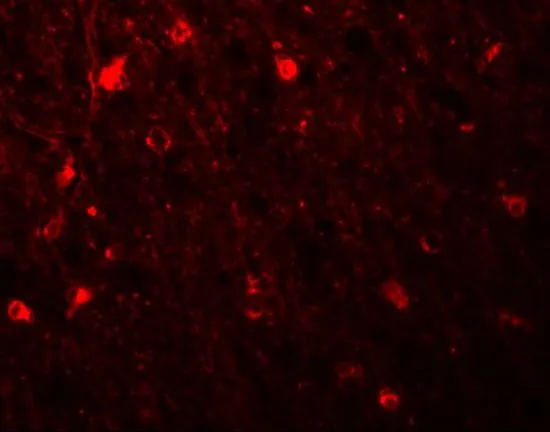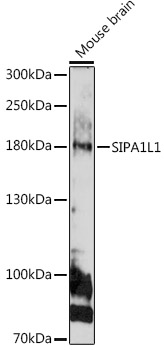
IHC-P analysis of human brain tissue using GTX85228 SIPA1L1 antibody. Working concentration : 5 microg/ml
SIPA1L1 antibody
GTX85228
ApplicationsWestern Blot, ELISA, ImmunoHistoChemistry, ImmunoHistoChemistry Paraffin
Product group Antibodies
TargetSIPA1L1
Overview
- SupplierGeneTex
- Product NameSIPA1L1 antibody
- Delivery Days Customer9
- Application Supplier NoteWB: 0.5 - 1 microg/mL. IHC-P: 5 microg/mL. *Optimal dilutions/concentrations should be determined by the researcher.Not tested in other applications.
- ApplicationsWestern Blot, ELISA, ImmunoHistoChemistry, ImmunoHistoChemistry Paraffin
- CertificationResearch Use Only
- ClonalityPolyclonal
- Concentration1 mg/ml
- ConjugateUnconjugated
- Gene ID26037
- Target nameSIPA1L1
- Target descriptionsignal induced proliferation associated 1 like 1
- Target synonymsE6TP1, SPAR1, signal-induced proliferation-associated 1-like protein 1, SIPA1-like protein 1, high-risk human papilloma viruses E6 oncoproteins targeted protein 1, spine-associated RapGAP 1
- HostRabbit
- IsotypeIgG
- Protein IDO43166
- Protein NameSignal-induced proliferation-associated 1-like protein 1
- Scientific DescriptionSignal-induced proliferation associated-like protein 1 (SIPA1L1) is a member of the SIPA1 family of RapGAPs. SIPA1L1 was initially identified as a binding partner and degradation target of the E6 oncoprotein of high-risk papillomaviruses. Recently, it was discovered that Casein kinase I epsilon (CKIe), a Wnt-regulated kinase that regulates Wnt/b-catenin signaling, also can bind to the carboxy-terminus of SIPA1L1. CKIe phosphorylates SIPA1L1, thereby reducing its stability and alleviating its inhibition of Rap1, a protein required for Wnt8/CKIe-mediated gastrulation during embryogenesis, suggesting SIPA1L1 plays important roles in embryo development as well as control of cell proliferation.
- Storage Instruction-20°C or -80°C,2°C to 8°C
- UNSPSC12352203





